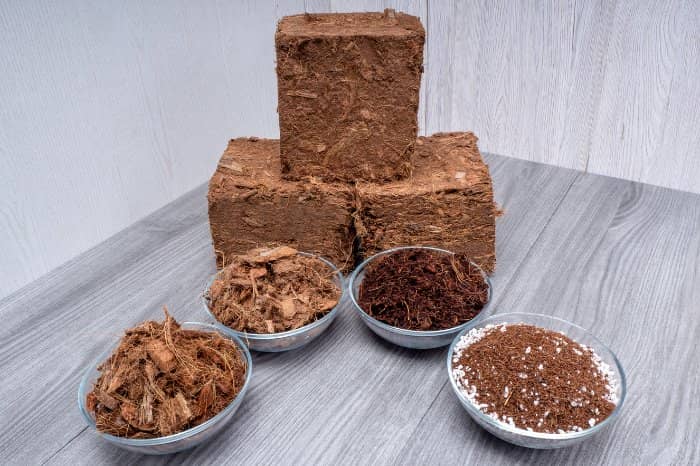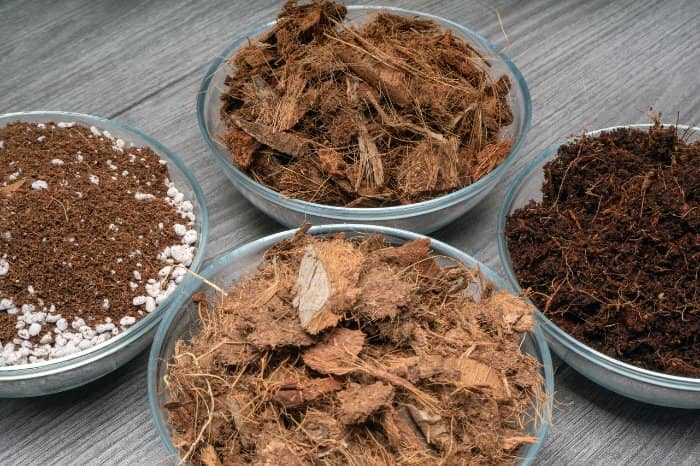How to make your own living soil is a great hack to learn if you are an avid gardener. It will allow your plants to thrive, allowing your plants to grow big and strong. Fortunately, making your own living soil is easier than you think and can make a difference in your garden.
Making your own living soil can ensure your plants have all the important nutrients they need to grow. You will notice an improved appearance in your plants and a more abundant harvest. Living soil is a great alternative to using synthetic fertilizers in your garden.
What Is Living Soil?
Living soil is a mixture of microbes that work together to break down organic matter which then provides valuable nutrients to plants. It includes a diversity of living organisms including fungi, bacteria, protozoa, nematodes, arthropods, and earthworms that work to create better soil.
Living soil provides a healthy environment so your plants can successfully grow. It can seem complicated at first but it is essentially about providing your soil with everything it needs so plants can receive all of the essential nutrients.
What Does Living Soil Consist Of?
Living soil consists of a mixture of organic materials. It is all about versatility and balance to create an optimal blend for your plants.
Organic Matter – How To Make Your Own Living Soil
Organic matter is an important aspect of soil. It includes dead plant material such as roots, stems, and leaves in various stages of decomposition.
Organisms And Microorganisms
Organisms and microorganisms include animals such as insects, crustaceans, and arachnids, as well as the bacteria and fungi that feed on the organic matter. This creates a microbial life cycle that cycles the nutrients in plant material back into a usable form for other plants.
Mineral Content
Mineral content consists of three main components: sand, silt, and clay. The combination of the three help determines the soil’s texture, drainage, structure, and what nutrients are available for the plants to absorb.
Take Out Time to Also Read:
Nutrients
Most plants need around 20 nutrients to thrive. Nutrients are vital for plant functions and growth. These necessary elements can be divided into two types of nutrients: micronutrients and macronutrients.
FoxFarm Liquid Nutrient Trio Soil Formula: Big Bloom, Grow Big, Tiger Bloom
Micronutrients – How To Make Your Own Living Soil
Micronutrients include boron, manganese, iron, zinc, copper, chlorine, molybdenum, nickel, sodium, cobalt, and silicon. Plants need micronutrients in smaller numbers.
Macronutrients
Macronutrients include hydrogen, oxygen, nitrogen, carbon, calcium, magnesium, phosphorus, potassium, and sulfur. Plants need macronutrients in larger numbers.
How To Make Your Own Living Soil
Ingredients
- 1 part compost
- 1 part coco coir and/or peat moss
- 1 part perlite and/or pumice
- Kelp meal: 1/4 cup for every five gallons
- Humic acid: 1/4 cup for every five gallons
- Endo mycorrhizae powder: 1/4- 1/2 teaspoon per gallon
- Worm Castings: up to 20% of total substrate
Equipment – How To Make Your Own Living Soil
- Large pot
- Rake
- Hand shovel
Step-by-Step Instructions
Step One: Begin With Your Base
Start by creating the base of your soil by combining equal parts of compost, coco coir and/or peat moss, and perlite and/or pumice. Your base mixture should make up about 20% of your living soil mixture.
For the mixture, you can use your choice of compost. It can include manure, food scraps, worm castings, leaves, or a mixture of composts. It should be high-quality and nutrient-dense to create a good base.

Step Two: Establish Fungus In The Mixture
Add kelp meal, humic acid, and Endo mycorrhizae powder to your soil base and mix them together. You should use 1/4 cup of kelp meal and 1/4 cup of humic acid for every five gallons of soil you use. You should add 1/4 to 1/2 teaspoon of Endo mycorrhizae powder for every gallon of soil.
Step Three: Establish Bacterial In The Mixture
Next, you should establish a bacterial population in your living soil. To do so, add up to 20% of your mixture with worm castings. You can also add up to 5% bat guano to your mixture.
Step Four: Adjust And Feed As Needed
After mixing all your components together for living soil, you can test it to see if you need to adjust it at all for your plants. Once you have a good mixture developed, you can create a living soil-feeding schedule. Add more compost to your mix around every 10 days to keep up with the needs of your living soil and plants.
Tips And Tricks
Talk to experts at your local garden center for advice for establishing living soil. They can recommend different additives to help your soil thrive and can even help you create your own live soil recipe. In addition, you can also see if they sell different ingredients that you need for your living soil.
You can create your own compost at home with a compost bin. Regularly maintaining your compost will be beneficial to your living soil. Not only does compost feed your plants but it also helps reduce waste.
A good way to start your own compost includes combining three parts brown materials and one part green materials. Green compost includes include kitchen scraps, coffee grounds, animal manures (such as horse or cow), and fresh plant and grass trimmings. Brown compost includes dried leaves, tree branches, cardboard, newspaper, hay, straw, and wood shavings.
Water your compost consistently so that it remains damp. You should also stir your compost at least once a week with a garden fork for the best results.

How To Make Your Own Living Soil: Everything To Know
Living soil is a mixture of microbes that break down organic matter to create nutrients for plants. Making your own living soil may seem scary, but with the right steps, you can do it. It will help create healthy soil that provides your plants with all of the nutrients they need to grow big and strong.
Living soil consists of mineral content, organisms, microorganisms, micronutrients, macronutrients, and organic material. It provides your plants with beneficial nutrients and conditions they need to be healthy.
Did you enjoy this tutorial on how to make your own living soil? If so, please share your thoughts in the comments and ask any questions you have regarding living soil.


